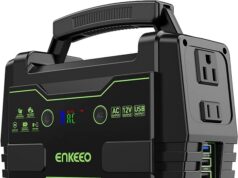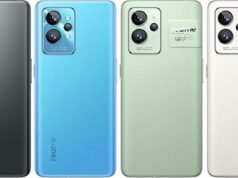Last Updated on
For homes and indoor spaces saturated with airborne pollutants and allergens, air purifiers have become essentials. If you’re concerned about your overall health, you should be concerned about the air you breathe. Living in metropolitan cities is becoming hazardous as there’s an increased pollution level, making air unfit for breathing.
With an air purifier, the air is made fresh, cleaner, and healthier for human survival. Choosing the best air purifier can be overwhelming since there are various types in the market. So, how can you select the right one? We’ve curated a guide that will help you choose the best smart air purifier 2021. Let’s dive in!
1. Consider your room size and area
Your room size is an essential factor in choosing an air purifier. A small air purifier may not effectively filter a large area, while a heavy-duty air purifier can be excessive for a small room.
Choose the right purifier that will adequately filter the air in your room. Bigger spaces need larger air purifiers and vice versa. Furthermore, in choosing an air purifier, you need to consider the type of room. For bedrooms, an air purifier that makes less noise will be ideal.
A purifier with variable settings will be suitable for sitting rooms. Are you allergic or asthmatic? Look for an option that will help alleviate the symptoms. An asthmatic person should consider the air purifier’s air change per hour (ACH) rate before making a purchasing decision.
ACH denotes the number of filtration times within a given period. In other words, this means the number of times an air purifier can filter the air within an hour. An ACH rating of four means that the air purifier cleans the room four times per hour.
Small air purifiers are designed for rooms up to 299 square feet, while large purifiers work well for rooms around 700 and 1990 square feet. The medium option is ideal for living space between 300 and 699 feet. If you’re not sure of your room size, it’s best to purchase a larger air purifier so long it’s within your budget.
2. Look for air purifiers specific for filtering pollutants
Pollutants and allergens are of various sizes, forms, and shapes. A purifier that works well for cigarette smoke may not be effective in filtering dander. There are different filters for various contaminants. Ensure you consider the filter type used by the purifier in removing pollutants.
Many purifiers feature specially designed filters for filtering certain pollutants or allergens. Do you want to eliminate foul odor or smell? A purifier with Activated Charcoal and HEPA filter technology is proven to purify the air. People with pets should opt for options with strong pre-filter to get rid of pet hairs.
3. Check CADR ratings
Many air purifiers come with a clean air delivery rate (CADR) number, which determines particle removal’s airflow volume and efficiency. The larger the CADR number, the more particles the filter will remove from the air.
Therefore, if you have a large room, it’s best to choose a purifier with a larger CADR number, though there is no industry standard for CADR number and room size. Typically, the manufacturer indicates the recommended room size on the product’s label.
For example, a purifier for pollen with a CADR of 200 will efficiently lower pollen concentration while adding 200 cubic feet of fresh air per minute.
Also Read
- 5 Cool Beer Accessories and Gadgets to Keep You Refreshed During Summer
- 8 Best Ipad Pro Gadgets You can Bank On
4. Check the noise levels of air purifiers
The air purifier you choose depends on where you want to use it. You may want to opt for a quieter device with high speeds for your bedroom or baby’s room. Many air purifiers feature an internal fan that filters the air. Some of these fans are often silent when set on low mode.
Others produce sound when they’re switched on. There are usually noise level ratings on the packaging. If you’re going to be spending lots of time in the same room where the air purifier is placed, you’ll need to consider an air purifier with the best noise rating. Noise level ratings are measured in decibels.
Air purifiers like Blueair Blue Pure 411 have a noise level of 17dB. An air purifier with a noise rating of 50dB is ideal for living space.
5. Consider a device with filtering technology
Though HEPA filters are the industry standard for indoor air purifiers, several filters exist, such as pre-filters, ultraviolet filters, electrostatic air filters, activated carbon filters, photocatalytic oxidation filters, antibacterial, and germicidal filters.
Pre-filter absorbs large particles such as pet hairs. Activated charcoal filters are used alongside other filters in eliminating odors and gases. They also help to neutralize smoke, fumes, and food smell.
Photocatalytic oxidation filters operate on a mechanism, using titanium dioxide-coated metal and ultraviolet light to dissolve chemicals in the filtration process. While antibacterial and germicidal filters eliminate harmful microorganisms, Ultraviolet filters and HEPA filters purify the air for breathing.
UV filters are primarily used in health centers, daycare schools, and kitchens to reduce diseases. Electrostatic air filters utilize particle filtration and electrostatic charge to filter substances as little as 0.1 microns.
The American Lung Association and Environmental Protection Agency approves HEPA (High-Efficiency Particulate Air) filter as the industry standard for air filters. This air filtration system removes allergens like pollen, dust, animal skin, and mold spores. They absorb 99.9% particles which are as small as 0.3 micrometers. You’ll need to change your HEPA filters often.
Your air purifier’s performance depends on the size and material of the filter. A large HEPA filter can adequately remove more particles compared to a small one.
Now that we know the various tips for choosing the best smart air purifier let’s review some of the best ones on the market.
3 Best Air Purifiers
Hathaspace Smart True HEPA Air Purifier
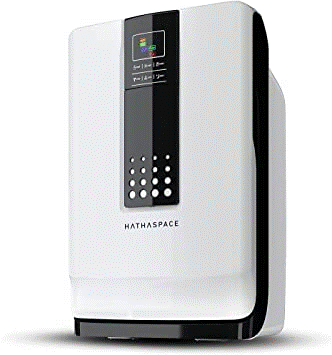 This air purifier features a 5-in-1 air purification system that eliminates odor, allergens, smoke, and other small particles. There’s nothing as good as breathing fresh and clean air.
This air purifier features a 5-in-1 air purification system that eliminates odor, allergens, smoke, and other small particles. There’s nothing as good as breathing fresh and clean air.
So with over 9000 reviews on Amazon, it’s not surprising that Hathaspace Smart True HEPA Air Purifier for home is ranked among the best air purifiers. It has an automatic quality sensor that distinguishes pollutants in the air and removes them to improve quality air.
The smart air purifier consists of a unique honeycomb activated carbon-filter which sucks up smoke, odors, and volatile organic compounds; an ozone-free ionizer absorbing bad odors such as litter boxes and cigarettes. You can never go wrong with this air purifier.
Coway Airmega 200M
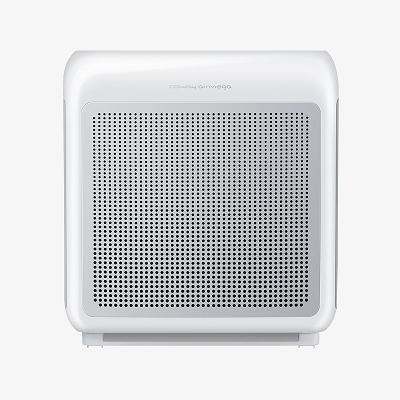 Designed by the Coway Airmega stable, Coway Airmega 200M is one of the quietest air purifiers. At its loudest, it’s 55 decibels. Like the Coway Airmega Mighty, the 200M model comes with a 4-stage purification system that features a pre-filter, a true high-efficiency particulate air filter, an ionizer, and an odor eliminator or filter.
Designed by the Coway Airmega stable, Coway Airmega 200M is one of the quietest air purifiers. At its loudest, it’s 55 decibels. Like the Coway Airmega Mighty, the 200M model comes with a 4-stage purification system that features a pre-filter, a true high-efficiency particulate air filter, an ionizer, and an odor eliminator or filter.
The compact design covers a wide area, including bedrooms, measuring up to 364 square feet. The Coway Airmega odor filter helps trap offensive smells and harmful gases to promote safe and healthy living.
Coway Airmega 200M is ideal for pet owners and people who are allergic and living with asthma. The Coway airmega 200m cadr rating for dust is 246, 233 for smoke, and 240 for pollen. This makes 200M a powerful air purifier.
Dyson Pure Cool Air Purifier
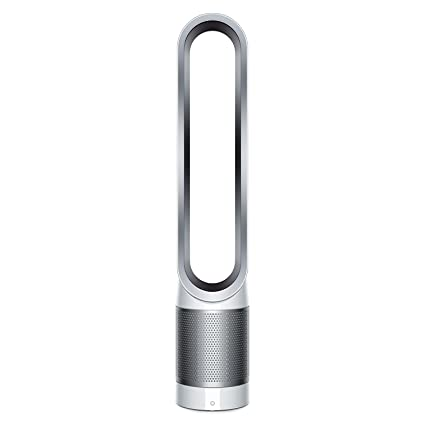 Popular for its silent vacuums and hair care tools, Dyson is named among the best air purifiers. Like its previous models, Dyson Pure Cool Air Purifier is efficient and has powerful suction for absorbing pollutants, odors, and volatile organic compounds. In addition, the app-enabled device enables you to monitor indoor air quality and schedule cleaning for a week.
Popular for its silent vacuums and hair care tools, Dyson is named among the best air purifiers. Like its previous models, Dyson Pure Cool Air Purifier is efficient and has powerful suction for absorbing pollutants, odors, and volatile organic compounds. In addition, the app-enabled device enables you to monitor indoor air quality and schedule cleaning for a week.
Perhaps you don’t want to use the app; Dyson Purifier features a standalone remote control that works the same as the application. This best air purifier with app is a must-have.
It possesses innovative features like three different sensors that modify settings, an LCD screen that displays live air quality reports, and a nighttime mode that quietens down the purifier when you’re fast asleep. With this smart air purifier review, we’re sure you’ll make the right choice.
Conclusion
With the above-listed tips, your days of searching for the best smart air purifiers are over! Ensure you check CADR ratings filter types to determine the effectiveness of the air purifier before purchasing it.
Furthermore, choose an air purifier with a good filter and noise levels. Avoid air purifiers that use ionizers and UV lights to produce ozone which can be harmful to health. Ozone is a lung irritant that can cause lung disease. With various air purifiers on the market, follow the tips above to make the best choice.



